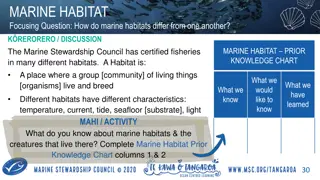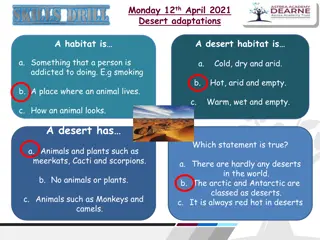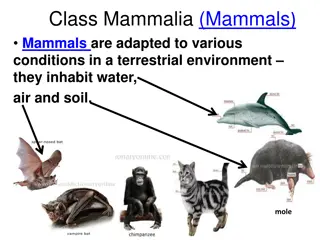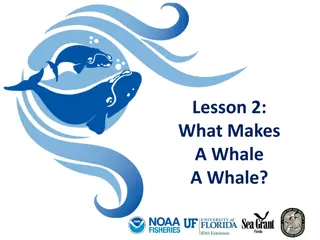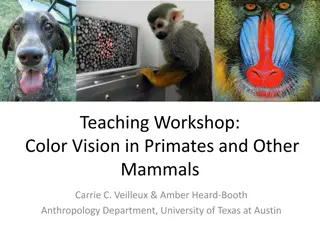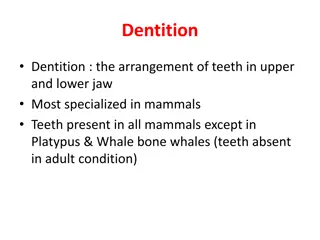Adaptations in Marine Mammals - Insights into Their Unique Survival Strategies
Delve into the world of marine mammals and explore their fascinating adaptations for life in the ocean. From using echolocation to finding food to having blubber for insulation, these creatures have evolved various survival strategies to thrive in their aquatic habitats.
Download Presentation

Please find below an Image/Link to download the presentation.
The content on the website is provided AS IS for your information and personal use only. It may not be sold, licensed, or shared on other websites without obtaining consent from the author.If you encounter any issues during the download, it is possible that the publisher has removed the file from their server.
You are allowed to download the files provided on this website for personal or commercial use, subject to the condition that they are used lawfully. All files are the property of their respective owners.
The content on the website is provided AS IS for your information and personal use only. It may not be sold, licensed, or shared on other websites without obtaining consent from the author.
E N D
Presentation Transcript
"Sea Otters" by Mike's Birds is licensed under CC BY-SA 2.0 Breathe air Give birth to live young Nurse their young Warm blooded Have hair Marine Mammals are animals who Live in the ocean!
Types of marine mammals in Washington Whales Porpoises Dolphins Orcas Sea lions Seals Otters Department of Fish and Wildlife
Life in the ocean Department of Fish and Wildlife
Life in the ocean Swim Dive Breathe air (hold breath/ must surface for air) Stay warm Find food Raise young Department of Fish and Wildlife
Marine mammal adaptations Some dolphins and whales use echolocation to find their food. "echolocation" by ManilaRyceis licensed underCC BY-NC-SA 2.0 Department of Fish and Wildlife
Marine mammal adaptations Sea otters, river otters, seals, and sea lions have a dense coat of fur that keeps them warm, and mostly dry. Left: Sea otter pelt from Alaska Wildlife ID Right: Seal pelt from side view from Science Photo Library Department of Fish and Wildlife
Marine mammal adaptations Whale, dolphins, porpoises, seals and sea lions use blubber (a thick layer of fat) to keep warm. Epidermis Dermis Blubber Connective Tissue Fascia Muscle Graphic courtesy of Whale and Dolphin Conservation Center Department of Fish and Wildlife
Marine mammal adaptations Mammals eat different types of food. They have different shapes and sizes of teeth or baleen. Department of Fish and Wildlife
Marine mammal adaptations Some mammals come on shore to have babies and to rest and others do not. Department of Fish and Wildlife
Marine mammal adaptations Some mammals form groups while others are solitary. Department of Fish and Wildlife
Marine mammal adaptations What do you think is an interesting marine mammal adaption? Department of Fish and Wildlife



